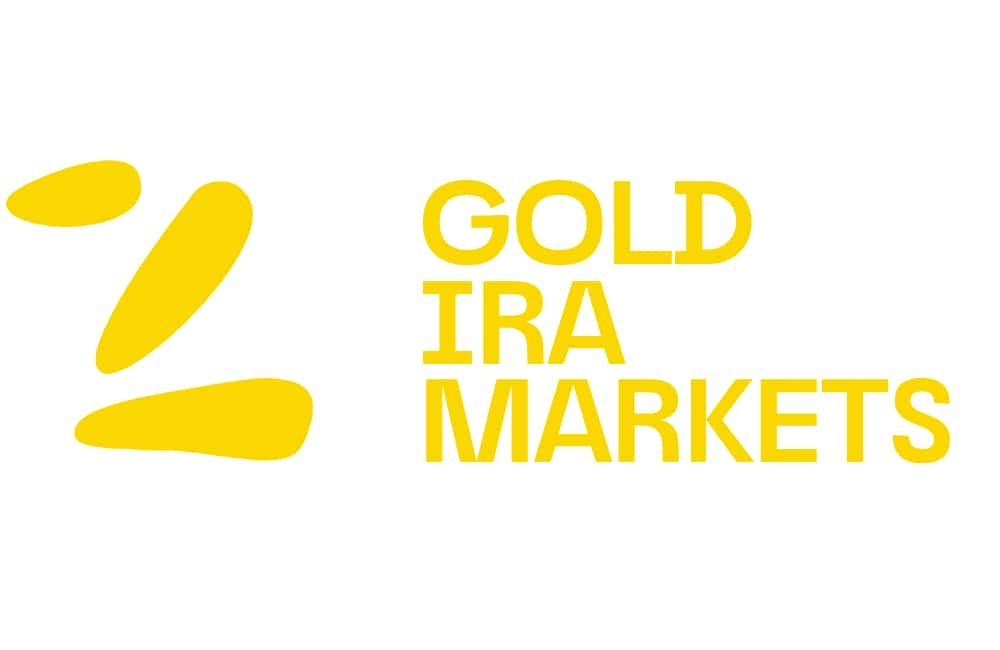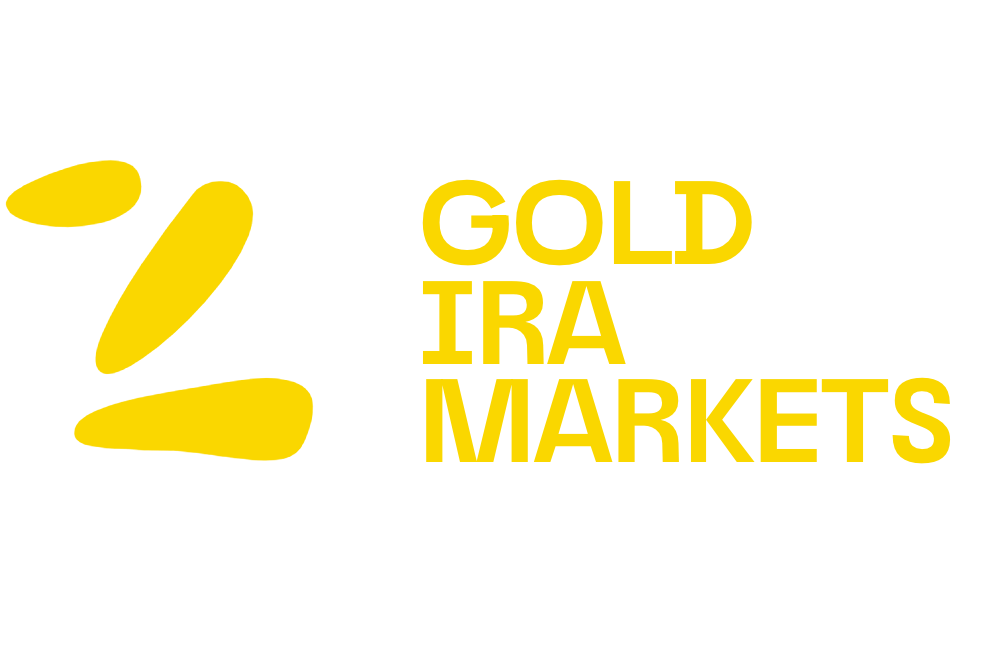Bitcoin IRA
Is Keeping Money in Bitcoin Worth It?
Pondering the potential benefits of keeping money in Bitcoin? Explore its hedging properties and diversification advantages to make an informed decision.

Keeping money in Bitcoin can be worth it for long-term financial goals. Bitcoin's decentralized nature and limited supply can act as a hedge against inflation and offer diversification benefits. However, the volatile price and regulatory uncertainties require careful consideration. Evaluating your risk tolerance, setting clear investment goals, and understanding Bitcoin's historical performance are vital steps. Diversifying your investment portfolio with Bitcoin can be beneficial, but staying informed and adapting to changing regulations is essential in this evolving landscape. Consider these factors to make an informed decision on whether holding money in Bitcoin aligns with your financial objectives.
Key Takeaways
- Bitcoin's potential for long-term growth and value preservation supports its worth as an investment.
- Understanding Bitcoin's volatility and risk factors is crucial before deciding to keep money in it.
- Regulatory uncertainties and compliance challenges can impact the value and legality of Bitcoin holdings.
- Diversifying with Bitcoin can hedge against inflation and provide global acceptance for long-term financial goals.
- Assessing individual risk tolerance and investment goals is essential to determine if keeping money in Bitcoin aligns with one's financial objectives.
Volatility of Bitcoin

Have you ever wondered why the volatility of Bitcoin is such an important aspect to ponder when deciding to invest in it?
Bitcoin's price is known for its extreme fluctuations, with daily swings of up to 10% or more. This high volatility was evident in March 2020 when the price plummeted by nearly 50% in a single day, highlighting the risks involved. The price of Bitcoin can change by thousands of dollars within a short span of time, making it a highly significant asset that requires careful consideration.
Several factors contribute to the volatility of Bitcoin, including market demand, regulatory news, and macroeconomic trends. Changes in market demand can lead to rapid price shifts, while regulatory news and macroeconomic trends also play a significant role in influencing Bitcoin's price movements. Investors in Bitcoin should be aware of these factors and be prepared for sudden price changes and significant market fluctuations when considering investing in this digital asset.
Regulatory Uncertainties

Regulatory uncertainties surrounding Bitcoin can pose challenges for investors. Varying stances from different countries and regulatory bodies create compliance hurdles. The lack of clear regulations on taxation, custody, and trading practices adds to the complexity of holding money in Bitcoin. This highlights the importance of staying informed on evolving regulatory frameworks.
Changes in regulations have the potential to impact the value and legality of Bitcoin investments. This underscores the need for vigilance in maneuvering the regulatory landscape.
Legal Implications of Bitcoin
Amidst the changing landscape of global financial regulations, the legal implications of Bitcoin present a complex and uncertain terrain for users and authorities alike. Understanding the legal aspects of Bitcoin is essential for effectively maneuvering the digital currency space.
Consider the following key points:
- Varying Global Stances: Different countries have distinct regulations regarding Bitcoin usage.
- Lack of Central Authority: The absence of a central entity raises concerns about legal protection for users.
- Regulatory Oversight: Bodies like the SEC are working to provide clearer guidelines for cryptocurrency oversight.
- Compliance Requirements: Bitcoin transactions face increased scrutiny due to concerns about money laundering and illegal activities.
Stay informed about regulatory developments to ensure compliance and protection when dealing with Bitcoin.
Compliance Challenges for Bitcoin
Overcoming compliance challenges in the world of Bitcoin poses a significant hurdle for both users and regulatory bodies due to the ambiguous and evolving nature of cryptocurrency regulations worldwide. Regulatory uncertainties, stemming from varying definitions of cryptocurrencies across countries, create compliance challenges like maneuvering regulations on money laundering, securities, and taxation specific to Bitcoin.
The absence of a centralized authority for Bitcoin further complicates regulatory oversight and enforcement. To guarantee the long-term viability and acceptance of Bitcoin, compliance with evolving regulatory frameworks is essential. Achieving regulatory clarity is vital for fostering institutional adoption of Bitcoin and its integration into mainstream financial systems.
Staying informed and adapting to the changing regulatory landscape is critical for both users and regulatory entities to manage the complexities of compliance in the domain of Bitcoin.
Risk Tolerance Assessment
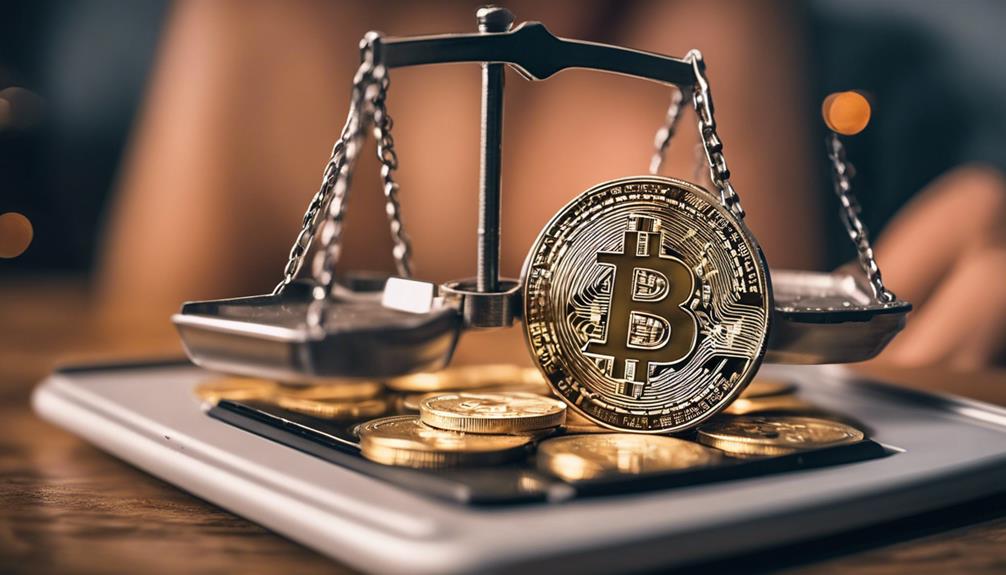
Evaluating your risk tolerance is vital when considering keeping money in Bitcoin.
You need to gauge how comfortable you're with potential price swings and market uncertainties.
Understanding Bitcoin's volatility is key to making informed decisions about your investment strategy.
Risk Appetite Evaluation
Evaluating your risk tolerance is an essential step in determining the most suitable investment strategy for your financial goals. When gauging your risk appetite, consider factors such as investment goals, financial situation, and emotional capacity. To help you navigate this evaluation process effectively, here are some key points to keep in mind:
- Define your investment goals clearly.
- Evaluate your current financial situation realistically.
- Reflect on your emotional capacity to handle market fluctuations.
- Use risk tolerance questionnaires as tools to guide your decision-making process.
Understanding your risk tolerance will help you align your investment decisions with your financial objectives, ensuring a balanced portfolio that suits your needs and preferences. Remember to reassess your risk tolerance regularly, especially as circumstances evolve.
Volatility Consideration
When considering the volatility of Bitcoin and evaluating your risk tolerance, it's important to understand how price fluctuations can impact your investment decisions. Bitcoin's price can swing noticeably, with daily changes of 5-10% being common, and occasional drops of 20% or more in a single day.
If you have a high risk tolerance, you might be drawn to the potential gains that volatile periods can offer. However, if you have a low risk tolerance, the price swings and potential losses associated with Bitcoin may make you uneasy. It's essential to assess your personal risk tolerance carefully before deciding whether to keep money in Bitcoin.
Understanding how you react to volatility can help you make more informed investment choices aligned with your financial goals.
Diversified Portfolio Strategy
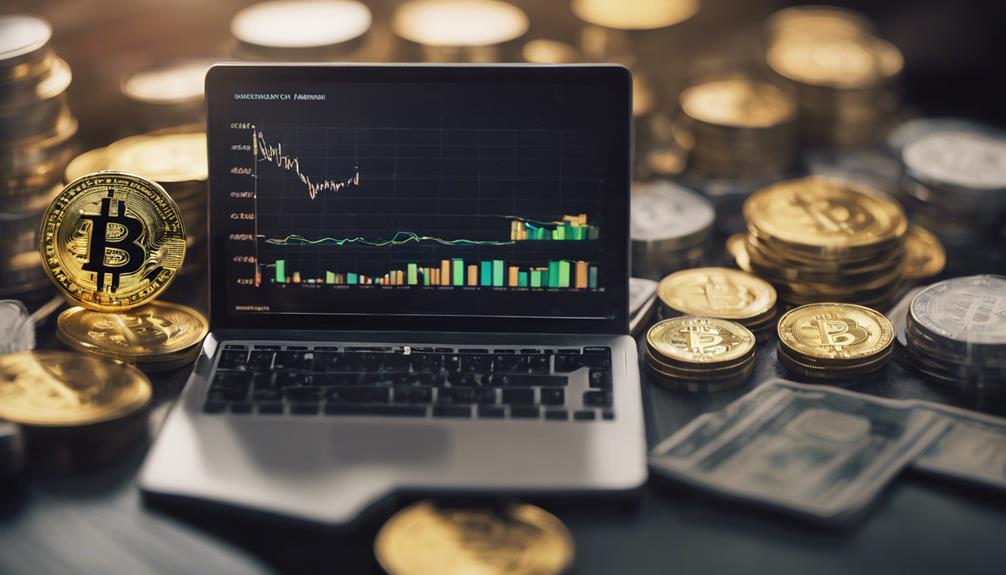
Taking into account a diversified portfolio strategy that includes Bitcoin can enhance your overall risk-adjusted returns and provide exposure to alternative investments. Here are some key points to ponder:
- Diversifying with Bitcoin can lower overall risk due to its low correlation with traditional asset classes.
- Including Bitcoin in a diversified portfolio can potentially boost returns by leveraging its high volatility and growth potential.
- Studies have indicated that adding Bitcoin to a traditional portfolio can improve risk-adjusted returns in the long run.
- A diversified portfolio strategy involving Bitcoin can offer exposure to alternative investments and act as a hedge against market downturns.
Bitcoin as a Store of Value

Including Bitcoin in your investment portfolio can serve as a valuable asset and store of value due to its capped supply and characteristics as a digital gold. Bitcoin's finite supply of 21 million coins makes it resistant to inflation, unlike traditional fiat currencies that can be subject to devaluation through excessive printing. Additionally, Bitcoin's decentralized nature and scarcity have positioned it as a potential hedge against economic uncertainty, attracting investors seeking alternatives to traditional financial assets.
Despite Bitcoin's price volatility, its long-term price appreciation trend supports its role as a store of value. The growing institutional adoption of Bitcoin, exemplified by companies like Tesla investing in the cryptocurrency, has further legitimized its store of value proposition in the financial domain. Many investors view Bitcoin as a safe haven asset, comparable to gold, especially during turbulent economic times when the stability of traditional markets is called into question. Considering these factors, Bitcoin's utility as a store of value continues to gain recognition among a diverse range of investors looking to diversify their portfolios.
Hedge Against Financial Markets

Bitcoin's resilience to market volatility positions it as a compelling hedge against financial markets. Consider the following points to better understand how Bitcoin serves as an effective investment tool:
- Diversification: Bitcoin offers a way to diversify traditional investment portfolios, reducing overall risk exposure.
- Decentralization: The decentralized nature of Bitcoin provides a hedge against central financial systems' vulnerabilities.
- Limited Supply: With a finite supply cap, Bitcoin is protected against inflationary pressures that can impact traditional currencies.
- Historical Performance: Bitcoin has historically shown positive price movements during economic uncertainties, highlighting its potential as a hedge against traditional markets.
Long-Term Financial Goals

For individuals with long-term financial aspirations, exploring Bitcoin's potential as a secure investment avenue is essential. Bitcoin's characteristics, such as being a store of value with a limited supply akin to gold, make it an attractive option for those seeking to preserve wealth over time.
Additionally, many investors view Bitcoin as a hedge against inflation, protecting their long-term financial goals from the erosion of purchasing power. Historical performance data indicates that Bitcoin has outperformed traditional assets like stocks and real estate over the past decade, further solidifying its appeal as a long-term investment.
Institutional adoption of Bitcoin is on the rise, with more financial institutions recognizing its value and incorporating it into their long-term investment strategies. The decentralized nature of Bitcoin, coupled with its global acceptance, adds to its allure as a viable option for individuals looking to diversify and safeguard their financial future.
Frequently Asked Questions
Should I Keep All My Money in Bitcoin?
You shouldn't keep all your money in Bitcoin due to its volatile nature. Diversification is key to managing risk effectively.
While Bitcoin can offer potential gains, it also poses significant risks. Consider your risk tolerance and investment goals when deciding where to allocate your funds.
Building a diversified portfolio that includes various assets, including Bitcoin, can help spread risk and potentially optimize returns.
Is It Worth Putting Money Into Bitcoin?
Is it worth putting money into Bitcoin?
Investing in Bitcoin can offer potential high returns, especially compared to traditional assets. However, its volatility means risks are significant. Consider your risk tolerance and long-term goals before diving in.
Bitcoin's decentralized nature and limited supply make it an attractive hedge against inflation.
Stay informed, be cautious, and make decisions aligned with your financial objectives to navigate the dynamic world of cryptocurrency investments wisely.
Is It Worth Investing in Bitcoin Anymore?
Investing in Bitcoin still holds potential for growth despite its volatility. Understanding the risks involved and diversifying your portfolio can help mitigate potential losses.
Researching reputable exchanges and implementing strong security measures are pivotal steps to safeguard your investments. Stay informed about market trends and consider consulting with financial advisors to make well-informed decisions.
Is It Worth Buying $100 in Bitcoin?
Investing $100 in Bitcoin offers potential for significant growth due to its historical high returns and limited supply. Consider the long-term benefits of holding Bitcoin as a hedge against inflation and economic uncertainty.
While risks exist in the volatile cryptocurrency market, the allure of substantial gains may make buying $100 in Bitcoin a worthwhile investment for your financial future. Research and monitor the market to make informed decisions for your portfolio.
Conclusion
Keeping money in Bitcoin can be a worthwhile investment for those with a high risk tolerance and a long-term perspective. While volatility and regulatory uncertainties exist, diversifying your portfolio with Bitcoin can serve as a hedge against traditional financial markets.
Anticipating objections about its unpredictable nature, remember that strategic allocation and patience can lead to potential growth and preservation of wealth.
Consider Bitcoin as a valuable addition to your retirement planning for the future.
Helen brings a wealth of experience in investment strategy and a deep passion for helping individuals achieve their retirement goals. With a keen understanding of market dynamics, Helen has been instrumental in shaping the vision and direction of Gold IRA Markets. She specializes in creating innovative solutions that align with our clients’ long-term investment objectives.
Bitcoin IRA
Bitcoin IRA Apps: A Comprehensive Guide for Investing in Your Future
Uncover the benefits of Bitcoin IRA apps for investing in your future, and discover how they can enhance your retirement portfolio.
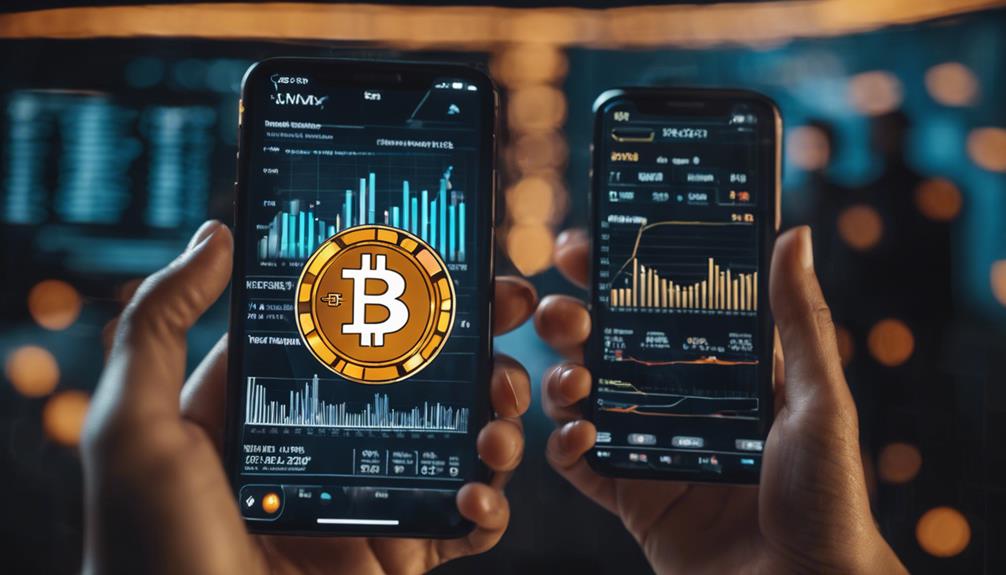
When considering Bitcoin IRA apps, remember they serve as self-directed retirement accounts enabling Bitcoin investments, offering diversification benefits. These accounts come with tax advantages like tax-deferred growth and potentially tax-free withdrawals. Selecting the right Bitcoin IRA company involves evaluating factors such as account minimums, security measures, supported cryptocurrency options, and annual administration fees. With Bitcoin IRAs, you invest in cryptocurrencies using specialized custodians, simplifying tax obligations. Achieve portfolio diversification and safeguard your future by exploring these apps further. More insights on Bitcoin IRAs await to enhance your investment knowledge and decision-making.
Key Takeaways
- Research reputable Bitcoin IRA app providers for secure investments.
- Evaluate app features like user interface, account management, and security.
- Consider app fees, cryptocurrency options, and customer support services.
- Ensure app compliance with IRS regulations for tax benefits.
- Opt for apps offering diverse investment options and educational resources.
Understanding Bitcoin IRAs
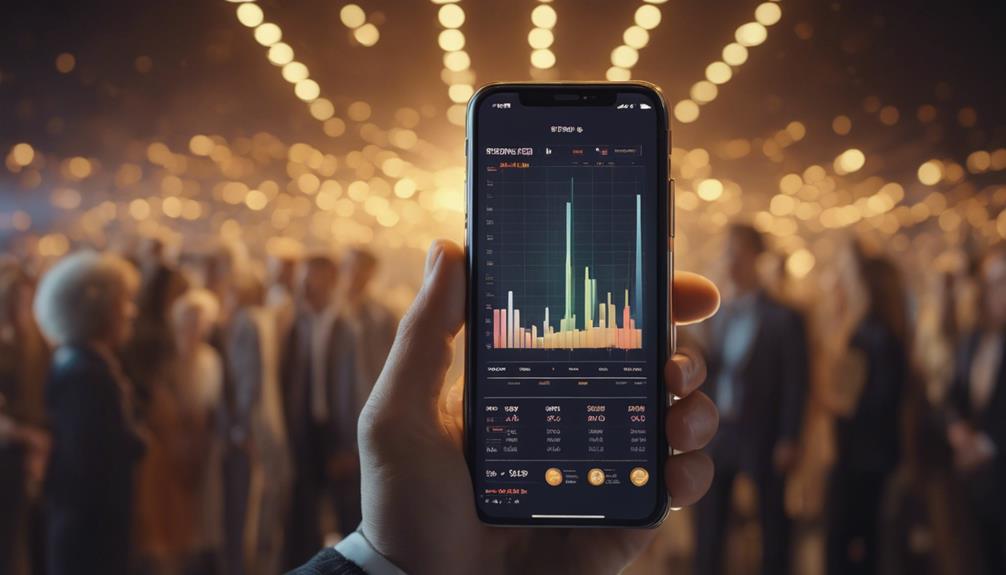
When considering Bitcoin IRAs, understanding the fundamentals of these self-directed retirement accounts is essential for successful investment planning. A Bitcoin IRA is a type of retirement account that allows you to hold digital assets like Bitcoin within your IRA account. Unlike traditional IRAs, Bitcoin IRAs offer the opportunity to invest in cryptocurrencies, expanding your investment options and potentially increasing diversification in your retirement portfolio.
To open a Bitcoin IRA, you'll need to choose from various IRA providers specializing in digital assets and cryptocurrency trading. These providers offer the necessary custodial services to guarantee compliance with IRS regulations governing self-directed IRAs.
One of the key advantages of a Bitcoin IRA is the potential tax benefits it can provide. Similar to traditional IRAs, Bitcoin IRAs offer tax-deferred growth on your investments, allowing your assets to grow without immediate tax implications. Additionally, withdrawals from a Bitcoin IRA may be tax-free under certain conditions, providing potential long-term tax advantages for your retirement savings.
Understanding how Bitcoin IRAs work and the available investment options is essential for making informed decisions about your retirement planning.
Benefits of Bitcoin IRAs

Investing in a Bitcoin IRA can offer you significant tax benefits and enhanced investment opportunities. With tax-deferred growth or tax-free withdrawals, Bitcoin IRAs help you maximize potential returns by avoiding heavy capital gains taxes. Including cryptocurrencies in your retirement portfolio not only diversifies your investments but also provides a hedge against market volatility. Additionally, Bitcoin IRA providers guarantee compliance with IRS regulations, offering peace of mind regarding legalities. To illustrate the benefits further, consider the table below:
| Benefits | Details |
|---|---|
| Tax Benefits | Tax-deferred growth and tax-free withdrawals help minimize tax liabilities. |
| Investment Opportunities | Digital currencies in IRAs offer enhanced investment opportunities for long-term growth. |
| Portfolio Diversification | Including cryptocurrencies can help mitigate risk by diversifying your retirement portfolio. |
Choosing the Right Bitcoin IRA Company

Consider key factors like account minimums, security measures, and cryptocurrency options when selecting the right Bitcoin IRA company for your investment needs. When choosing from various Bitcoin IRA companies, look for these essential features:
- Account Minimums: Evaluate the minimum amount required to open an account with each company.
- Security Measures: Research the security protocols, such as offline storage and encryption, implemented by the company to safeguard your investments.
- Cryptocurrency Options: Compare the range of cryptocurrencies supported by each company to make sure they align with your investment preferences.
- Annual Administration Fees: Assess the annual fees charged by different companies for managing your self-directed IRA.
How Bitcoin IRAs Work
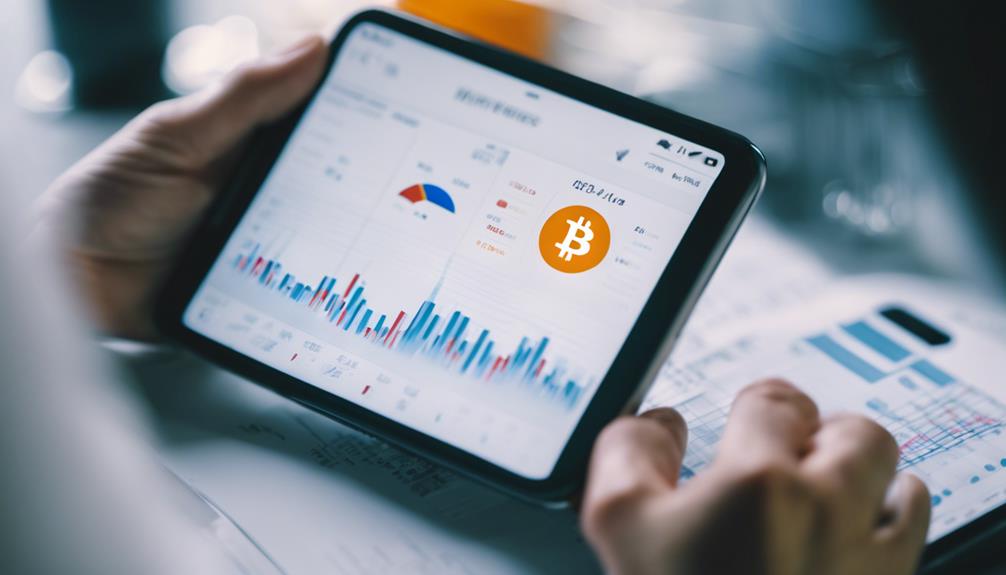
Bitcoin IRAs function as retirement accounts that enable individuals to invest in cryptocurrencies, particularly Bitcoin, offering tax benefits and potential for high returns. These specialized retirement accounts work similarly to traditional IRAs but involve purchasing and holding digital assets like Bitcoin instead of traditional securities.
By investing in Bitcoin IRAs, individuals can diversify their retirement portfolios and potentially capitalize on the high returns associated with cryptocurrencies. To manage Bitcoin IRAs effectively, investors need specialized custodians due to the unique nature of cryptocurrency investments. These custodians help individuals navigate the complexities of holding digital assets within a retirement account.
Additionally, utilizing a Bitcoin IRA can simplify an individual's tax obligations related to cryptocurrency investments, making it easier to comply with tax regulations while enjoying the benefits of investing in digital currencies for retirement.
Tax Implications of Bitcoin IRAs
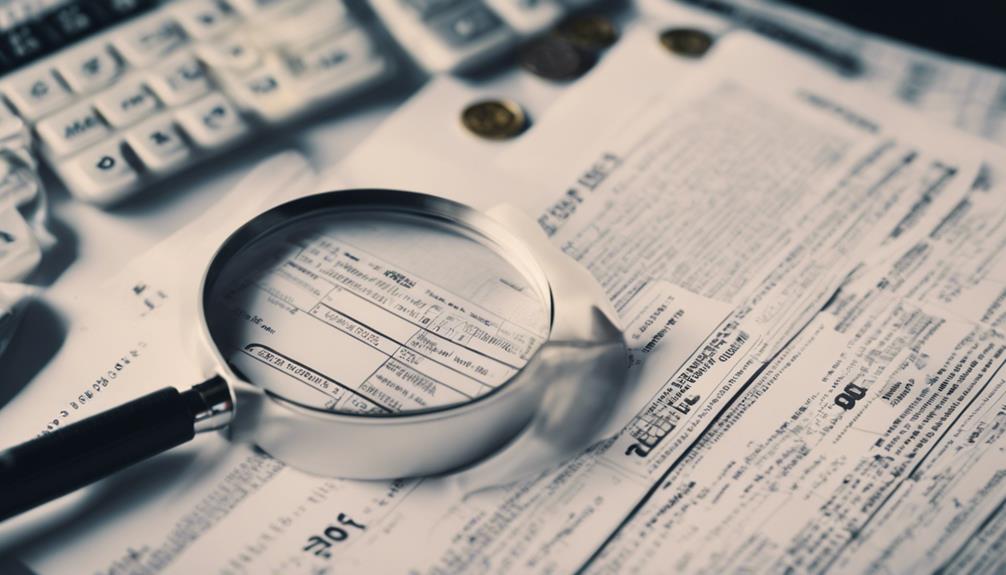
Understanding the tax implications of Bitcoin IRAs can greatly impact your retirement savings strategy. When contemplating Bitcoin IRAs, it's important to bear in mind the various tax aspects involved. Here are some key points to keep in mind:
- Bitcoin IRAs offer tax benefits such as tax-deferred growth or tax-free withdrawals, which can greatly influence your savings over time.
- The type of account you choose, whether Traditional or Roth, will determine the tax implications for your Bitcoin IRA investments.
- Adhering to IRS regulations is essential to maximize the tax advantages associated with Bitcoin IRAs and avoid any penalties or issues.
- Leveraging guidance from platforms like BitcoinIRA can help you navigate the complexities of cryptocurrency taxes within IRAs effectively, ensuring you optimize your tax benefits and retirement savings growth.
Understanding these tax implications can help you make informed decisions and maximize the advantages of investing in Bitcoin IRAs for your future.
Security Measures for Bitcoin IRAs

Enhance the safety of your Bitcoin IRA investments by implementing robust security measures. When considering a Bitcoin IRA, security is paramount. Many providers offer advanced security protocols to safeguard your digital assets. Some key security measures include utilizing 256-bit SSL encryption for secure data transmission and providing insurance protection up to $700 million to cover potential losses. Offline storage, such as cold storage solutions, guarantees that your assets aren't vulnerable to online hacking attempts. Additionally, end-to-end insurance coverage offers thorough protection for your investments.
Leading Bitcoin IRA custodians like BitGo employ multi-signature wallets, requiring multiple private keys to authorize transactions, enhancing security. These custodians also implement advanced security protocols to prevent unauthorized access and ensure secure transaction approvals. By incorporating these security measures, Bitcoin IRA companies aim to offer a secure and reliable investment environment for individuals looking to diversify their retirement portfolios with digital assets.
Diversifying Your Portfolio With Bitcoin IRAS
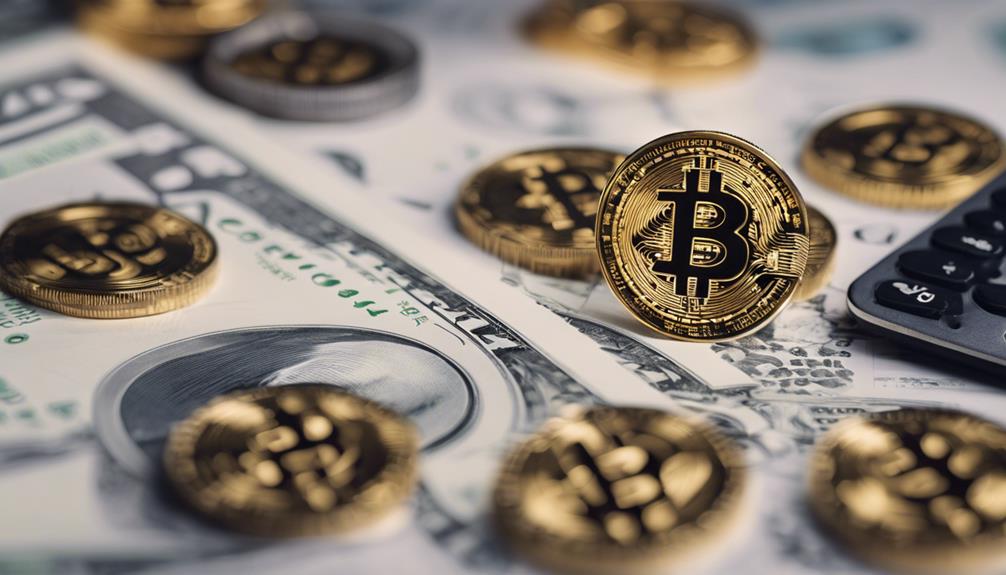
Consider incorporating Bitcoin IRAs into your investment portfolio to diversify and potentially maximize your returns. Diversifying your retirement portfolios with cryptocurrency investments can offer various benefits.
- Tax Advantages: Bitcoin IRAs, including Roth IRAs, provide the opportunity to hold cryptocurrencies in a tax-advantaged account, allowing for potential tax savings on capital gains.
- High Returns: Investing in Bitcoin IRAs can expose you to the potential high returns of the cryptocurrency market, offering a chance to boost your retirement savings.
- Wealth Accumulation: Properly managed Bitcoin IRAs can contribute to long-term wealth accumulation, helping secure your financial future.
- Risk Mitigation: Including Bitcoin IRAs in your portfolio can act as a hedge against traditional market risks and inflation, providing added diversification to your investments.
Investing Strategies for Bitcoin IRAs
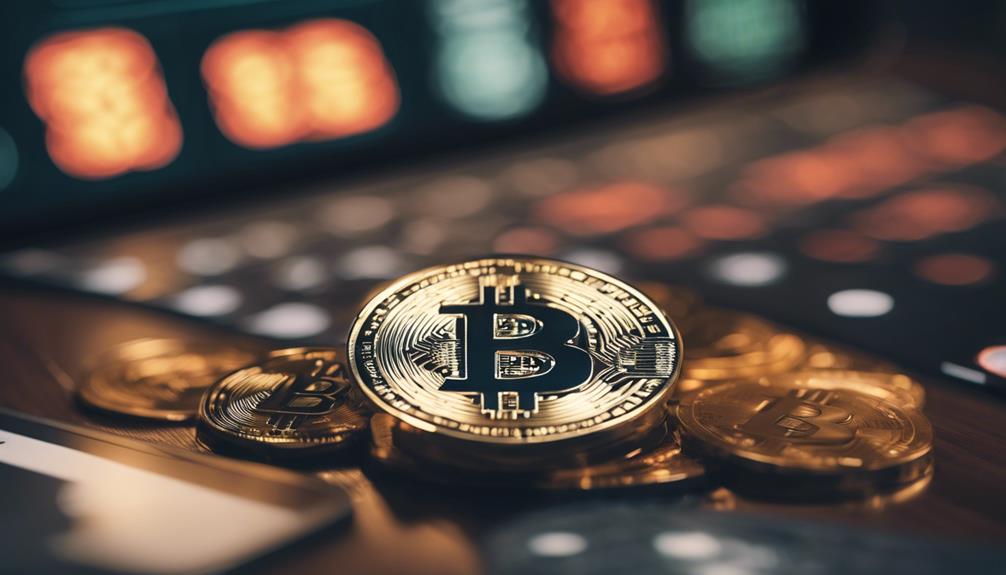
When considering investing strategies for your Bitcoin IRA, remember to implement diversification to help manage risks effectively.
By spreading your investments across a variety of cryptocurrencies, you can better navigate the market's volatility.
Stay proactive in monitoring market trends and adjusting your strategy accordingly to align with your financial objectives.
Diversification for Bitcoin IRAs
Diversifying your Bitcoin IRA with a range of cryptocurrencies is a smart way to manage risk and potentially boost returns. By spreading your investments across different digital assets, you can optimize the risk-return profile of your retirement portfolio. Here are some key points to take into account when diversifying your Bitcoin IRA:
- Spreading investments across various cryptocurrencies helps reduce risk exposure.
- Investing in different types of digital assets can enhance potential returns.
- Benefiting from the growth of multiple cryptocurrencies in your retirement portfolio is possible through diversification.
- Diversification strategies mitigate the impact of price volatility on a single asset.
Risk Management Strategies
To effectively manage risk in your Bitcoin IRA, implement various strategies such as dollar-cost averaging, diversifying your portfolio with multiple cryptocurrencies, and utilizing stop-loss orders.
Dollar-cost averaging helps spread out your Bitcoin purchases over time, reducing the impact of market volatility.
A diversified portfolio with different cryptocurrencies can lower your risk exposure to any single asset.
Stop-loss orders automatically sell Bitcoin if prices drop below a set level, limiting potential losses.
Stay informed about market trends, news, and regulatory developments to make well-informed decisions.
Consult with financial advisors or cryptocurrency experts to develop personalized risk management strategies tailored to your Bitcoin IRA.
Frequently Asked Questions
Is It a Good Idea to Have a Bitcoin Ira?
Having a Bitcoin IRA can be a smart move for diversifying your retirement portfolio. It offers potential high returns and tax advantages, helping maximize growth opportunities and protect against market volatility.
Including digital currencies in your retirement planning can enhance investment options. Consider a Bitcoin IRA as a way to secure your future with a balanced approach to long-term financial goals.
How Much Does Bitcoin IRA Cost?
When considering the cost of a Bitcoin IRA, it's important to factor in account setup fees, annual administration fees, and trading fees.
The total expense can vary depending on the company, with minimum investments typically ranging from $1,000 to $5,000. Some providers may waive setup fees but charge higher trading fees.
Comparing fee structures and features among different companies can help you make an informed decision about the overall costs involved.
Can I Withdraw Bitcoin From Bitcoin Ira?
Yes, you can withdraw Bitcoin from a Bitcoin IRA, but the process usually involves liquidating the Bitcoin into cash first. Withdrawals are subject to IRS regulations, and improper execution may result in taxes and penalties.
Depending on the provider, you may have options to convert Bitcoin to cash within the IRA for withdrawals. It's important to understand the specific terms of your IRA agreement and consult with a professional to guarantee compliance.
Can You Buy Bitcoin Ira?
Yes, you can buy Bitcoin in an IRA through specialized custodians. This allows holding cryptocurrencies like Bitcoin in a tax-advantaged retirement account, offering potential tax benefits and portfolio diversification.
Custodians manage the purchase and secure storage of Bitcoin for retirement savings, following IRS regulations. By using approved custodians, you can invest in Bitcoin within an IRA, ensuring compliance and security for your future financial goals.
Conclusion
As you navigate the world of Bitcoin IRAs, remember that these digital assets symbolize a new era of financial independence and security. By choosing the right company, understanding the tax implications, and implementing sound security measures, you can diversify your portfolio and maximize your investment potential.
With careful planning and strategic investing, Bitcoin IRAs offer a unique opportunity to secure your future and achieve your financial goals. Stay informed, stay vigilant, and watch your investments grow.
Sarah develops and leads our educational initiatives to help clients understand the intricacies of investing in gold and cryptocurrencies. Her role is vital in ensuring that our clients are well-informed and confident in their investment decisions. Sarah’s expertise and commitment to education are key to empowering our clients.
Bitcoin IRA
How to Secure Your Future With a Bitcoin IRA Wallet
Yearn for a financially secure future? Discover how a Bitcoin IRA wallet can help you achieve your goals with tax advantages, growth potential, and robust security measures.

To secure your financial future with a Bitcoin IRA wallet, leverage tax advantages, potential growth, diversification, and robust security measures. Research custodians supporting cryptocurrency investments, understand fee structures, and align investment goals. Opt for 256-bit SSL encryption, $700 million insurance, cold storage, and multi-signature tech. Choose a provider based on security, encryption, supported cryptocurrencies, experience, and fees. Diversify to maximize returns, use tax advantages, and spread risk. Combining Bitcoin's inflation resistance with IRA tax benefits can help safeguard your future wealth effectively. Embrace the power of Bitcoin IRAs for a flourishing financial journey.
Key Takeaways
- Utilize tax advantages for retirement savings with Bitcoin IRAs.
- Diversify investments to optimize returns and spread out risk.
- Secure digital assets with advanced encryption and offline storage.
- Choose reputable custodians with insurance and strong security measures.
- Combine Bitcoin's inflation resistance with IRA tax benefits for long-term financial security.
Benefits of Bitcoin IRA Wallets

Bitcoin IRA wallets offer significant advantages for individuals looking to secure their financial future through retirement savings. One key benefit is the tax advantages they provide. By incorporating digital currencies like Bitcoin into retirement accounts, investors can enjoy the potential for growth while also benefiting from tax efficiencies. These wallets also aid in diversifying investment portfolios, which can help spread risk and potentially maximize returns over the long term. Additionally, utilizing Bitcoin IRAs can assist investors in avoiding hefty capital gains taxes, making them a tax-efficient option for long-term savings.
Another advantage of Bitcoin IRA wallets is the ownership and security they offer. With these wallets, investors have full control over their digital assets, providing peace of mind knowing that their investments are safeguarded against risks like exchange hacks or frozen accounts. This sense of ownership and security can be essential when planning for retirement and ensuring that your savings are protected for the future. Bitcoin IRAs present a compelling option for those seeking to fortify their retirement savings with the potential growth of digital currencies.
Setting Up Your Bitcoin IRA
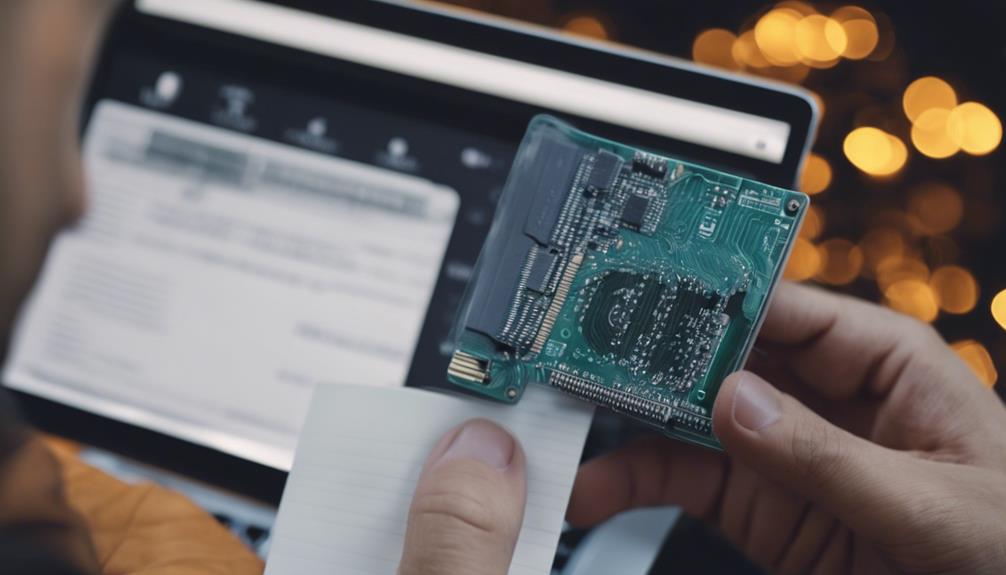
When establishing your Bitcoin IRA, the initial step is to identify a custodian that supports cryptocurrency investments. This custodian will help you open your account by providing the necessary forms and guidance for submitting your personal information and funding the account. It's important to make sure that your investment goals and risk tolerance align with the options offered by the custodian. Researching different custodians is vital to understand the fees they charge and the services they provide. Here's a table to help you navigate this process:
| Aspect | Description |
|---|---|
| Custodian Options | Research various custodians to find one that supports cryptocurrency investments. |
| Fees | Understand the fee structure of each custodian to make an informed decision. |
| Funding | Provide the required funding and personal information to open your Bitcoin IRA account. |
Once you have chosen a custodian and set up your account, you can start investing in Bitcoin and other cryptocurrencies through their platform.
Security Measures for Bitcoin IRAs
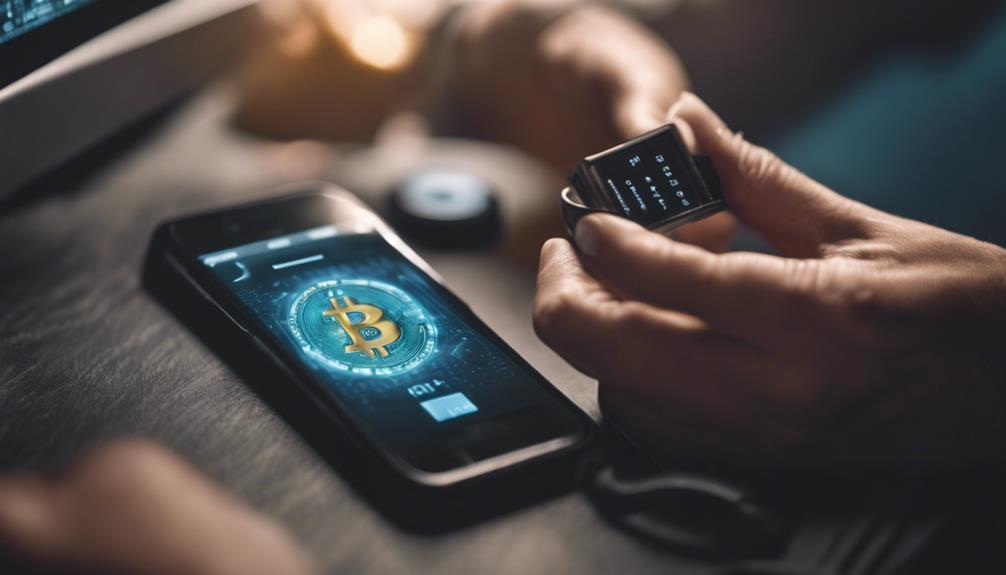
Enhance the protection of your Bitcoin IRA with robust security measures that safeguard your digital assets. Bitcoin IRAs employ 256-bit SSL encryption to guarantee secure transactions and data protection.
Custodians of Bitcoin IRAs offer insurance protection of up to $700 million for digital assets, providing an additional layer of security. Utilizing offline cold storage with physical keys stored in secure locations enhances the security of Bitcoin IRAs by keeping digital assets away from online threats.
Multi-signature technology is also utilized in cold-storage wallets within Bitcoin IRAs, requiring multiple signatures to authorize transactions and adding an extra level of protection. Continuous monitoring and updates to security protocols ensure that the assets stored in Bitcoin IRAs remain safe from potential threats.
Choosing a Bitcoin IRA Provider
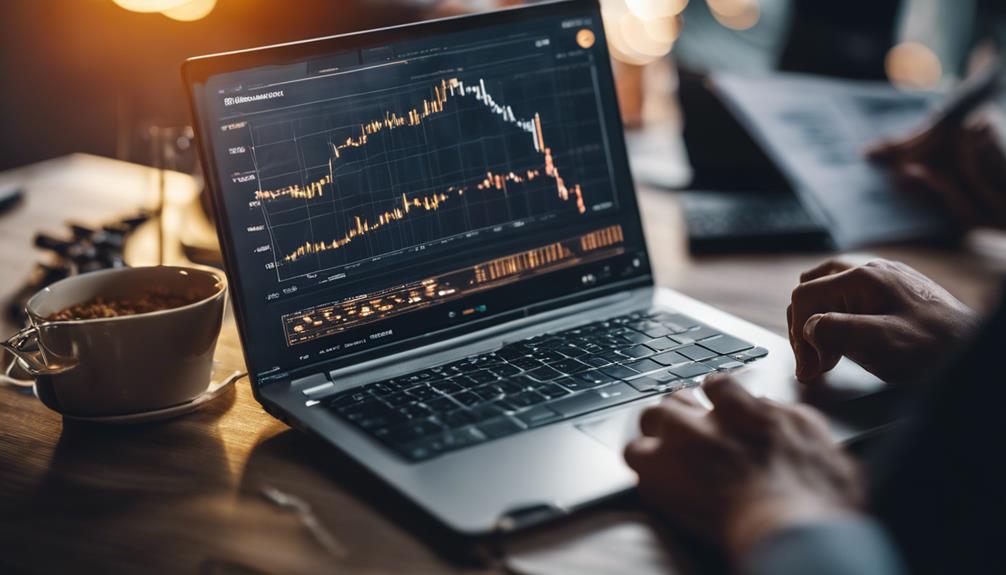
Consider evaluating the security features offered by different Bitcoin IRA providers to guarantee the protection of your digital assets. When selecting a Bitcoin IRA provider, look into their encryption standards and insurance coverage to make sure the safety of your investments.
Additionally, examine the variety of cryptocurrencies supported by the provider to have options for diversification within your IRA. It's important to check the experience and track record of the Bitcoin IRA provider in managing self-directed IRAs to make an informed decision. Take the time to review customer feedback and ratings to gauge the provider's reputation and service quality.
Furthermore, comparing the fees and fee structures of various Bitcoin IRA providers is essential to align them with your investment goals. By considering these factors diligently, you can choose a Bitcoin IRA provider that best suits your needs and helps secure your financial future.
Maximizing Your Bitcoin IRA Investment

To make the most of your Bitcoin IRA investment, focus on diversification to optimize returns and mitigate risks. Bitcoin IRAs offer tax advantages for retirement savings, allowing you to maximize your investment returns while exploring the world of digital currencies.
Diversifying your portfolio with a Bitcoin IRA can help spread out risk and potentially increase overall returns. By including digital currencies like Bitcoin in your retirement account, you can also avoid heavy capital gains taxes in the long run. This strategy not only provides inflation resistance but also enhances your investment opportunities.
Combining the inflation resistance of Bitcoin with the tax advantages of Traditional and Roth IRAs can help secure your financial future. Take advantage of the opportunities presented by Bitcoin IRAs to strengthen your investment portfolio and safeguard your retirement savings for the long term.
Frequently Asked Questions
Is It a Good Idea to Have a Bitcoin Ira?
It's crucial to consider investing in a Bitcoin IRA as a smart move due to its potential for diversification and tax advantages. By including Bitcoin in your retirement portfolio, you may enhance returns and hedge against inflation.
It offers a unique way to save for retirement while potentially minimizing capital gains taxes. However, it's important to weigh the risks and benefits based on your financial goals and risk tolerance before making a decision.
Can I Withdraw Bitcoin From Bitcoin Ira?
Yes, it's crucial to withdraw Bitcoin from a Bitcoin IRA.
When you reach the eligible retirement age, you have the option to withdraw your funds in cash or cryptocurrency, including Bitcoin.
The withdrawal process involves submitting a request through the platform.
It's vital to review the specific terms of your Bitcoin IRA account to understand the withdrawal options available to you.
Flexibility is offered to cater to individual account holder needs.
Can I Hold Bitcoin in My Ira?
You can hold Bitcoin in your IRA through a self-directed IRA tailored to cryptocurrencies. This option allows you to invest in alternative assets like Bitcoin, aligning with your retirement savings goals.
Is Bitcoin IRA Insured?
Yes, Bitcoin IRA is protected. BitGo, a leading provider of custody services, offers insurance coverage through Lloyds of London for Bitcoin IRA wallets. This insurance guarantees the safety of digital assets stored with BitGo, providing peace of mind for investors.
Details about this coverage can be accessed on BitGo Trust, offering transparency and clarity. Having insurance with BitGo adds an extra layer of security to your Bitcoin IRA investments.
Conclusion
To sum up, fortifying your future with a Bitcoin IRA wallet is akin to constructing a fortress around your financial stability.
By investing in Bitcoin through a retirement account, you're safeguarding your wealth against market volatility and inflation.
With proper security measures and a reliable provider, you can maximize the potential of your investment and guarantee a more stable financial future.
So, take control of your retirement savings and explore the benefits of a Bitcoin IRA today.
Sarah develops and leads our educational initiatives to help clients understand the intricacies of investing in gold and cryptocurrencies. Her role is vital in ensuring that our clients are well-informed and confident in their investment decisions. Sarah’s expertise and commitment to education are key to empowering our clients.
Bitcoin IRA
Buy Bitcoin in Your IRA
Get started on potential growth and tax advantages by investing in Bitcoin in your IRA, offering a secure financial future – find out more!

Investing in Bitcoin in your IRA offers growth potential in the cryptocurrency market and tax advantages for higher returns. To start, open a self-directed IRA with a custodian supporting cryptocurrencies. Verify fees and confirm alignment with your investment goals and risk tolerance. Crypto IRAs diversify your portfolio with coins like Bitcoin, Ethereum, Ripple, and Litecoin. They offer security features like cold storage and encryption for protecting assets. Choose reputed IRA providers to safeguard investments and consider tax benefits for long-term wealth building. Exploring this avenue can lead to a secure financial future with potential growth and tax advantages.
Key Takeaways
- Open a self-directed IRA with a custodian supporting Bitcoin investments.
- Verify tax benefits like tax-free growth potential and contributions with pre-tax dollars.
- Choose a reputable IRA provider like BitIRA or iTrustCapital for secure investments.
- Diversify your IRA with Bitcoin for high-growth potential and hedging against market risks.
- Maximize returns and secure your financial future by investing in Bitcoin within an IRA.
Benefits of Bitcoin IRAs

Bitcoin IRAs offer significant benefits for investors aiming to diversify their retirement savings and leverage the potential growth of the cryptocurrency market. One key advantage lies in the tax benefits they provide for retirement savings, allowing for tax-free growth potential.
By incorporating Bitcoin IRAs into your investment portfolio, you can achieve diversification, gaining exposure to the dynamic cryptocurrency market. Compared to traditional IRAs, Bitcoin IRAs offer the potential for higher returns, making them an attractive option for those seeking growth opportunities.
Moreover, investing in Bitcoin through an IRA enables you to hold cryptocurrencies like Bitcoin in a tax-efficient manner, optimizing your investment strategy. Additionally, Bitcoin IRAs come with robust security features that safeguard your investments and guarantee compliance with regulations, providing peace of mind as you navigate the world of digital assets.
Setting Up Your Bitcoin IRA
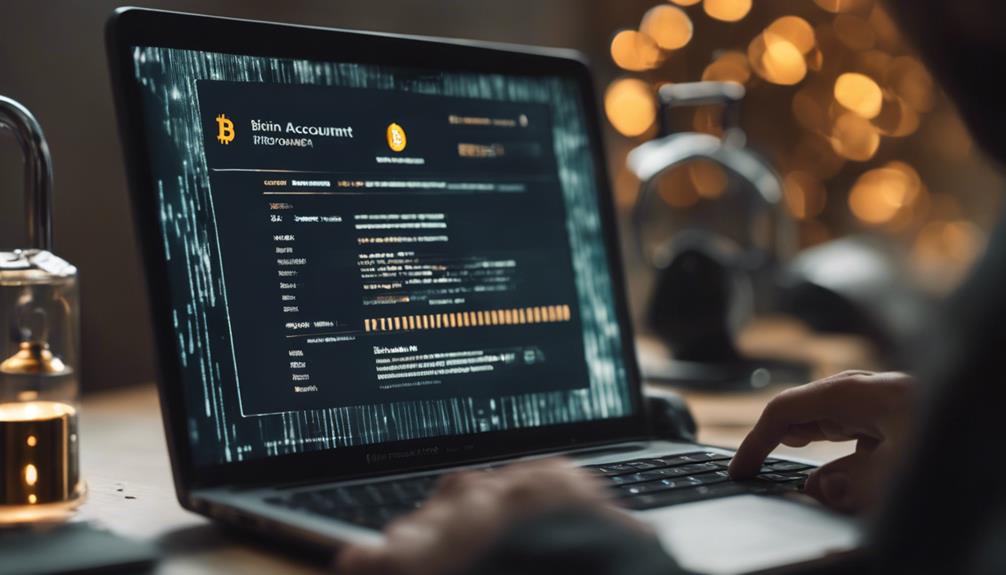
When establishing your Bitcoin IRA, the first step involves opening a self-directed IRA with a custodian that supports cryptocurrency investments. Make sure the custodian offers options for Bitcoin and other cryptocurrencies to align with your investment goals and risk tolerance.
Provide necessary personal and banking details to set up your Bitcoin IRA account. It's essential to verify that the account's fees are reasonable to prevent hindering your retirement savings goals. Comparing fees among different custodians can help you make an informed decision.
By carefully considering these factors, you can tailor your Bitcoin IRA to suit your specific needs and financial objectives. Take the time to review the terms and conditions, understand the risks involved, and ensure that the custodian is reputable.
Setting up your Bitcoin IRA thoughtfully and diligently at the beginning can pave the way for a secure and potentially rewarding investment for your retirement savings.
Investing in Cryptocurrency for Retirement
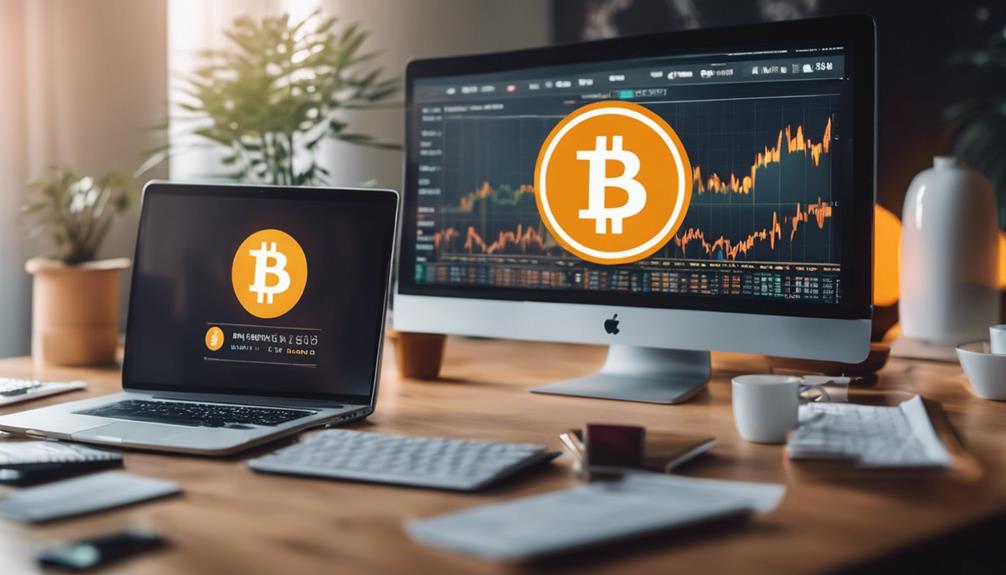
When considering investing in cryptocurrency for retirement, you'll want to explore the various options available to diversify your portfolio.
The benefits of a Crypto IRA include potential tax advantages and the opportunity for higher returns compared to traditional assets.
However, it's crucial to also carefully weigh the risks associated with cryptocurrency investments to make informed decisions for your retirement savings.
Retirement Cryptocurrency Investment Options
Considering the potential for long-term growth and diversification beyond traditional assets, exploring retirement cryptocurrency investment options through a self-directed IRA can offer a strategic approach to securing your financial future.
With a self-directed IRA, you can invest in popular cryptocurrencies like Bitcoin, Ethereum, Ripple, and Litecoin, potentially benefiting from their long-term growth potential. These investments also come with tax advantages and the ability to hedge against market risks.
However, it's important to be mindful of the volatility and regulatory uncertainties surrounding cryptocurrencies when planning for retirement. To guarantee the security of your retirement portfolio, it's vital to select a reputable IRA custodian that allows for cryptocurrency investments.
Make informed decisions to optimize your retirement savings with the diversification and growth potential that cryptocurrencies can offer.
Benefits of Crypto IRA
Investing in a Crypto IRA offers tax advantages and the opportunity to diversify your retirement portfolio by including popular cryptocurrencies like Bitcoin. With the potential for higher returns compared to traditional IRAs, a Crypto IRA allows you to invest in well-known cryptocurrencies such as Ethereum, Ripple, and Litecoin.
By diversifying your investment portfolio, you can spread risk across different asset classes, potentially increasing overall returns. Additionally, the security features in a Crypto IRA can help safeguard your investments in the volatile cryptocurrency market.
This option not only provides the potential for growth but also enables you to explore a new asset class within your retirement savings, offering a different avenue for securing your financial future.
Risks to Consider
To navigate the landscape of investing in cryptocurrency for retirement, it's essential to acknowledge the unique risks associated with such speculative assets. When considering crypto retirement accounts, be aware of the market volatility that can lead to significant fluctuations in value.
Additionally, the speculative nature of cryptocurrencies poses regulatory uncertainties, insurance challenges, and a higher susceptibility to fraud compared to traditional investments. Penalties and fees associated with self-directed IRAs can impact your retirement savings goals if not carefully evaluated.
Consulting a financial advisor is vital to assess whether investing in cryptocurrencies aligns with your long-term financial objectives and risk tolerance. Understanding these risks is fundamental to making informed decisions about incorporating cryptocurrencies into your retirement portfolio.
Tax Advantages of Bitcoin IRAs

Bitcoin IRAs offer significant tax advantages that can boost your retirement savings. By using pre-tax dollars to contribute to your Bitcoin IRA, you can lower your current tax liabilities.
Additionally, withdrawals after age 59 ½ are tax-free, allowing you to maximize your savings over time.
Tax Benefits of Bitcoin IRAS
When considering tax benefits, Bitcoin IRAs provide a unique advantage with their potential for tax-free growth in retirement savings. Investing in Bitcoin through a Roth IRA allows you to enjoy tax-free gains upon retirement, unlike personal crypto accounts.
Contributions to Bitcoin IRAs are made with pre-tax dollars, aiding in long-term wealth building. Selling Bitcoin within a Roth IRA exempts you from taxes and penalties on gains, maximizing your retirement savings.
Roth IRAs offer significant tax advantages compared to traditional personal crypto accounts, making them a smart choice for those looking to invest in Bitcoin while reaping the benefits of tax-free growth.
IRS Regulations on Bitcoin
Understanding IRS regulations on Bitcoin within retirement accounts is essential for maximizing the tax advantages of Bitcoin IRAs.
The IRS has classified cryptocurrencies as property in retirement accounts since 2014, affecting how they're taxed. When it comes to contributions to Roth IRAs, they must be made in cash, not cryptocurrency.
While few traditional IRA providers allow the addition of cryptocurrency, it's possible to purchase crypto for Roth IRAs. Any cryptocurrency held in Roth IRAs is taxed similarly to how stocks and bonds are taxed.
Being aware of these IRS regulations regarding cryptocurrencies in retirement accounts can help you navigate the tax implications and make informed decisions when considering Bitcoin IRAs.
Security Features of Crypto IRAs

With specialized custodians, Crypto IRAs provide secure storage for digital assets, offering features such as cold storage and multi-signature wallets to protect your cryptocurrency holdings. When considering a Crypto IRA for your investments, here are some key security features to keep in mind:
- Cold Storage: Your assets are stored offline, making them less susceptible to hacking attempts compared to hot wallets connected to the internet.
- Multi-Signature Wallets: Requiring multiple signatures for transactions adds an extra layer of security, reducing the risk of unauthorized access to your funds.
- Encryption Methods: Advanced encryption techniques are employed to secure your assets, ensuring that your cryptocurrency holdings remain safe from cyber threats.
Custodians of Crypto IRAs prioritize security by implementing robust measures to safeguard investors' assets. Regular audits and security assessments are conducted to maintain the integrity of the platform and protect against potential vulnerabilities. By leveraging these security features, Crypto IRAs aim to provide a safe and reliable environment for individuals looking to invest in cryptocurrencies within their retirement accounts.
Diversifying Your IRA With Bitcoin
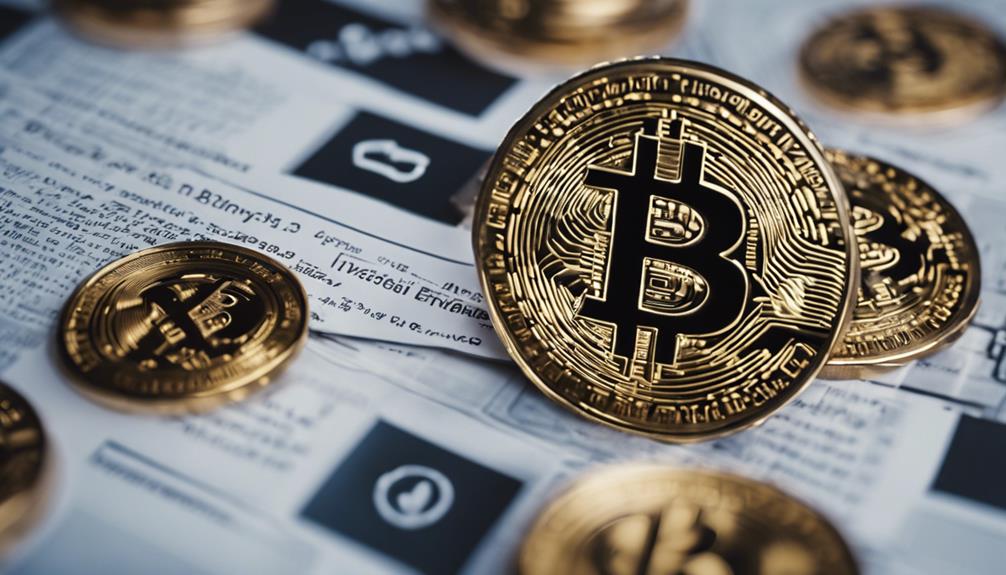
Considering the security features of Crypto IRAs, exploring the potential benefits of diversifying your IRA with Bitcoin can offer you a pathway to expanding your investment portfolio. Adding Bitcoin to your IRA can provide a means to diversify your investments with a high-growth asset.
Bitcoin's historical performance has shown significant returns, making it an attractive option for IRA diversification. Diversifying with Bitcoin in your IRA can also help hedge against traditional market risks and inflation.
By incorporating Bitcoin into your IRA, you gain exposure to the growing cryptocurrency market, which can contribute to long-term wealth building. Additionally, investing in Bitcoin within your IRA allows you to take advantage of potential tax benefits and growth opportunities that come with this digital asset.
This strategic move not only broadens your portfolio but also positions you to potentially benefit from the unique characteristics of Bitcoin in the investment landscape.
Choosing the Right IRA Provider

To select the appropriate IRA provider for purchasing Bitcoin, evaluate reputable companies like BitIRA, iTrustCapital, CoinIRA, and Equity Trust. When choosing the right IRA provider, consider the following:
- Licensed and Regulated: Confirm that the IRA provider is licensed, regulated, and offers self-directed IRAs specifically designed for cryptocurrency investments.
- Fee Structures and Transaction Costs: Examine the fee structures and transaction costs associated with buying Bitcoin in your IRA. Understanding these costs will help you assess the overall impact on your investment returns.
- Reputation and Customer Reviews: Take into account the reputation and customer reviews of the IRA provider. Feedback from other investors can provide valuable insights into the quality of service and support offered by the provider.
Before making a decision, verify that the chosen IRA provider aligns with your investment goals and risk tolerance when venturing into Bitcoin investments. By conducting thorough research and due diligence, you can make an informed choice that suits your financial objectives.
Maximizing Returns With Bitcoin IRAS
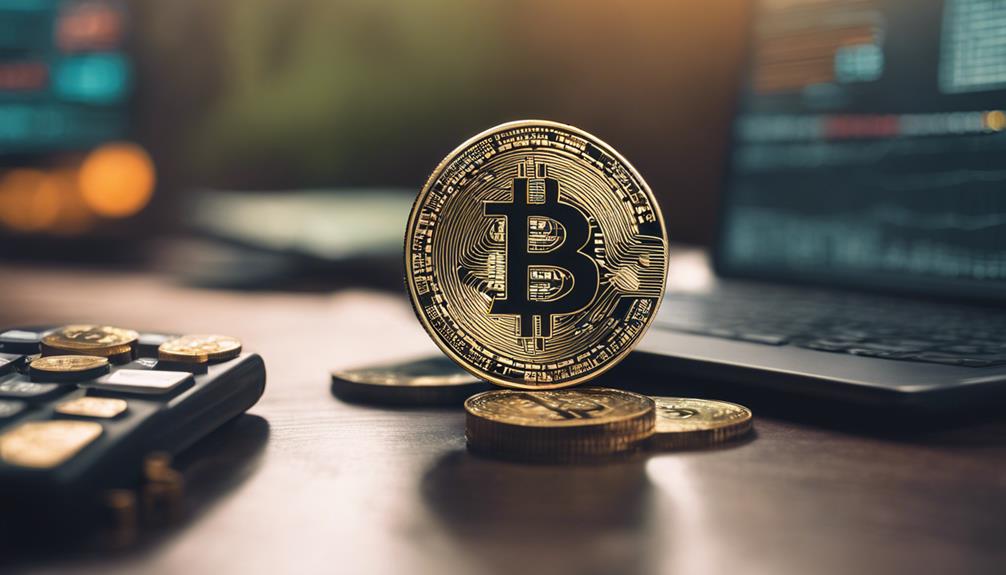
Maximize your potential returns through strategic investment in Bitcoin IRAs, leveraging the cryptocurrency's growth opportunities within a tax-advantaged retirement account.
Bitcoin IRAs offer the potential for high growth, making them an attractive option for investors seeking to diversify their portfolios and build long-term wealth.
One of the key advantages of Bitcoin IRAs is the tax benefits they provide, which can greatly enhance overall returns compared to traditional investment accounts.
By investing in Bitcoin within an IRA, you can streamline your tax obligations, simplifying the process of managing gains and ensuring that you make the most of your investment.
Holding Bitcoin in an IRA can also help protect your retirement balances from market volatility, providing a level of security and stability to your portfolio.
Consider the potential advantages of investing in Bitcoin through an IRA to maximize your returns and secure your financial future.
Frequently Asked Questions
Can I Buy Bitcoin in an IRA Account?
Yes, you can buy Bitcoin in an IRA account. Investing in Bitcoin through an IRA allows for a diversified portfolio with potential tax advantages.
To proceed, make sure to comply with IRA regulations. This approach can offer a secure and tax-efficient way to hold cryptocurrency for retirement, expanding investment options within the framework of retirement savings.
Engage with specialized custodians to facilitate the process and enjoy potential benefits for your financial future.
How to Deposit Into Bitcoin Ira?
To deposit funds into a Bitcoin IRA, you can contribute cash through checks, direct deposits, or wire transfers to the custodian. Another option is transferring money from a traditional IRA or 401(k) account.
Make sure to adhere to IRS contribution limits to avoid penalties. Follow the specific procedures outlined by your chosen custodian for depositing into your Bitcoin IRA. Adherence to guidelines is essential for a smooth deposit process.
Can I Buy Bitcoin in a Self-Directed Ira?
Yes, you can purchase Bitcoin in a self-directed IRA. This option lets you diversify your retirement portfolio with alternative assets like Bitcoin.
By choosing a self-directed IRA, you gain more control over your investments, including actively managing your Bitcoin holdings within a tax-advantaged account. This approach offers potential growth opportunities and a broader range of investment choices beyond traditional assets.
Consider the risks and benefits before making decisions about Bitcoin in your self-directed IRA.
Is It a Good Idea to Have a Bitcoin Ira?
Having a Bitcoin IRA can be a wise move for diversifying your retirement savings. It offers potential for higher returns, tax advantages, and the ability to invest in cryptocurrencies like Bitcoin.
With security features to protect your investments, a Bitcoin IRA can provide a unique opportunity within the volatile crypto market. Consider the benefits of this investment option when planning for your retirement.
Conclusion
Just as a well-balanced diet is key to maintaining a healthy body, diversifying your IRA with Bitcoin can help secure a stable financial future.
By taking advantage of the tax benefits, security features, and potential for high returns that Bitcoin IRAs offer, you can guarantee your retirement portfolio is resilient to market fluctuations.
Choose the right IRA provider and maximize your returns with this innovative investment option to set yourself up for long-term financial success.
Sarah develops and leads our educational initiatives to help clients understand the intricacies of investing in gold and cryptocurrencies. Her role is vital in ensuring that our clients are well-informed and confident in their investment decisions. Sarah’s expertise and commitment to education are key to empowering our clients.
-

 Bitcoin IRA3 months ago
Bitcoin IRA3 months agoBitcoin IRA Apps: A Comprehensive Guide for Investing in Your Future
-

 Bitcoin IRA3 months ago
Bitcoin IRA3 months agoBuy Bitcoin in Your IRA
-

 Gold IRA3 months ago
Gold IRA3 months agoEmergency Medicine Physicians Investing in Gold IRA: A Step-by-Step Guide in the USA
-

 Bitcoin IRA3 months ago
Bitcoin IRA3 months agoHow to Secure Your Future With a Bitcoin IRA Wallet
-

 Bitcoin IRA3 months ago
Bitcoin IRA3 months agoHow to Invest Bitcoin in Your IRA
-

 Bitcoin IRA3 months ago
Bitcoin IRA3 months agoEssential Bitcoin IRA Facts in Las Vegas
-

 IRA Investment Strategies3 months ago
IRA Investment Strategies3 months agoWhy Retirement Planning Is Important in India
-

 IRA Investment Strategies2 months ago
IRA Investment Strategies2 months agoPrivate Placement Investing via Self-Directed IRA
